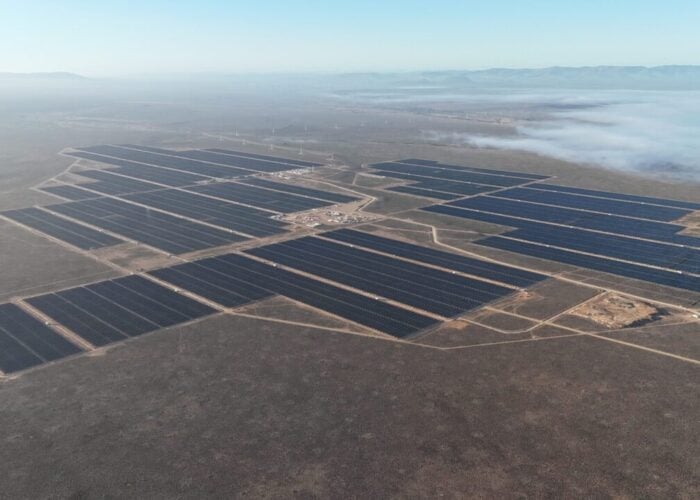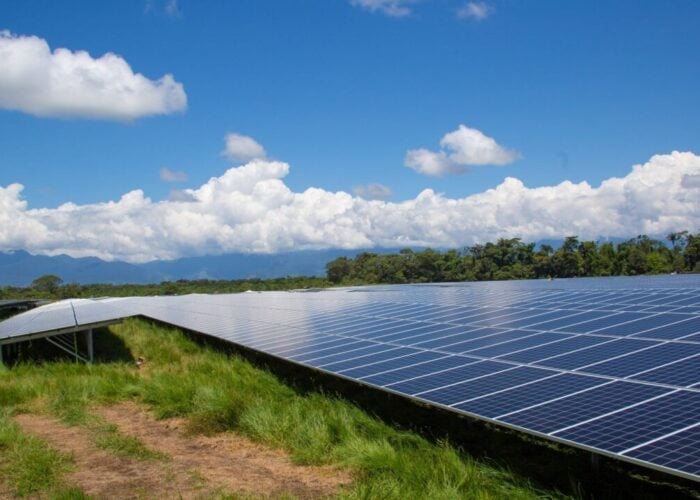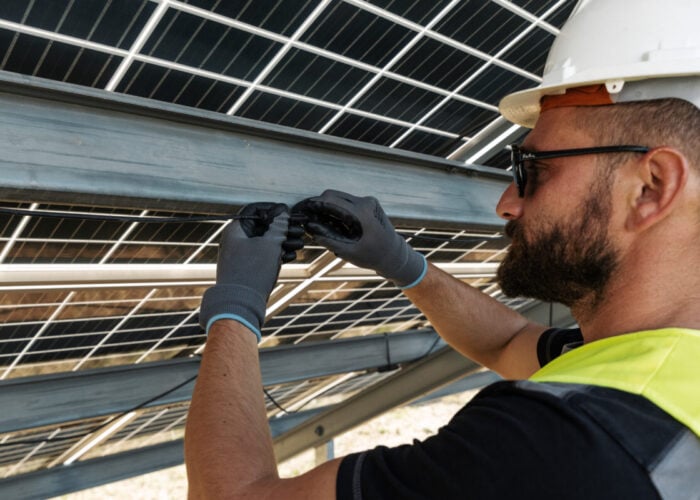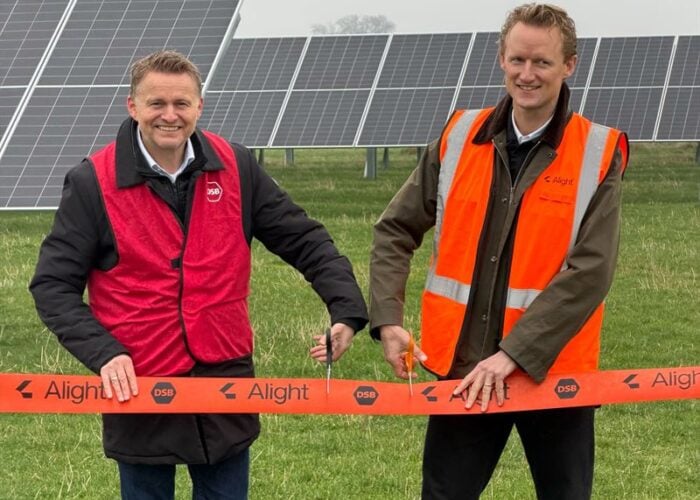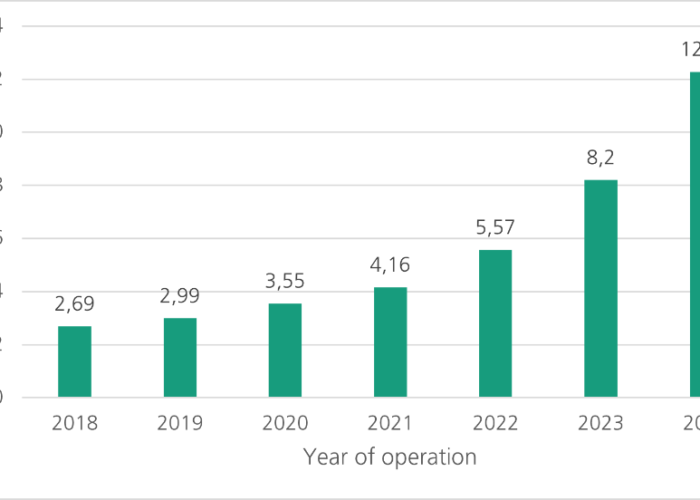
Industry veteran Nigel Morris, chief strategy officer at Australia’s Smart Energy Council, charts the country’s transformation from solar pioneer to global testbed for distributed energy resources, as battery energy storage installations surge to 1,700 units daily and penetration rates reach 70% in some postcodes.
According to Morris, Australia has evolved into one of the world’s most advanced laboratories for distributed solar and storage technologies. Residential battery installations reached peaks of 1,700 units per day and total distributed storage capacity exceeding one gigawatt-hour within just two months of a major rebate programme launch.
Try Premium for just $1
- Full premium access for the first month at only $1
- Converts to an annual rate after 30 days unless cancelled
- Cancel anytime during the trial period
Premium Benefits
- Expert industry analysis and interviews
- Digital access to PV Tech Power journal
- Exclusive event discounts
Or get the full Premium subscription right away
Or continue reading this article for free
The transformation represents the culmination of 35 years of solar industry development that Morris has witnessed firsthand, from his early days with pioneering companies when there were far fewer businesses operating in the sector, through his 11-year tenure at BP Solar.
“We are the canary in the coal mine for the rest of the world,” Morris says, describing Australia’s unique position in the global energy landscape. “We have some of the most sophisticated and advanced distributed, clean and distributed energy resources in the form of residential rooftops and now storage in the world.”
Record-breaking penetration rates establish Australia as global solar leader
Australia’s solar adoption has reached new heights, with penetration rates of 30-50% common across many areas and some postcodes achieving 70% or higher adoption, according to Morris.
This massive deployment has created approximately 5 million solar homes, supported by what Morris describes as some of the world’s cheapest installed solar prices.
“For a small country, we’re off the Richter, but we have incredibly high penetration rates,” Morris explains. The country now maintains installation costs three to four times below American pricing and two to three times below European costs, creating a hypercompetitive market that serves as a global testing ground for price elasticity and technology adoption.
The scale of deployment has altered Australia’s energy landscape. For instance, in Western Australia, distributed solar now represents more generation capacity than traditional sources. It is also worth noting that Australia’s installed rooftop solar PV capacity recently surpassed 26GW.
At the same time, multiple states generate more than 100% of their energy from renewables for weeks or months at a time. The National Electricity Market (NEM), serving most of Australia’s population, has had to adapt to manage these unprecedented renewable energy penetration levels.
Cheaper Home Batteries Program triggers storage revolution
The July launch of the Cheaper Home Batteries Program has catalysed a transformation in Australia’s energy storage sector. Monthly installations jumped from 100-200 units to peaks of 1,700 batteries per day, creating what Morris called “the largest battery rebate in our history”.
This surge has generated more than a gigawatt-hour of distributed battery storage connected to residential solar systems within two months. The installations are increasingly integrated into centralised management platforms at the state level or through the NEM.
“To all those people who bought solar over the last 10 or 20 years without a battery: here’s your chance,” Morris says, explaining how the rebate has unlocked a retrofit market among existing solar owners.
The programme has tapped into the 5 million existing solar homes, equipping them with storage capabilities while continuing to serve the 300,000-400,000 new homes added annually.
The economics are compelling even for renters. Morris illustrates this with a personal example, proposing to install a 13kW solar system with dual batteries on a rental property with only a two-year lease.
With peak electricity rates at 70 cents per kilowatt-hour, shoulder rates at 36 cents, and off-peak at 20 cents in New South Wales, the investment case remains strong even for temporary installations.
Smart inverter protocols and grid management set international benchmark
Australia has also implemented some of the world’s most sophisticated control and regulation systems for distributed energy resources. Dynamic control, emergency backstop control and load control mechanisms are now built into virtually all states, giving network operators unprecedented ability to manage power flows.
“We lead the world in the ability for networks to manage power flows, and indeed for consumers today to trade via VPPs that have really taken off over the last few years,” Morris says. Virtual power plants (VPPs) have gained increased traction, partly due to state government mandates requiring participation for rebate access.
These control systems enable what Morris describes as “one of the largest and most sophisticated controllable distributed systems of solar and batteries in the world”.
Specifically, technology allows larger systems to be installed while managing network stress. When beneficial to energy market prices, these systems typically operate at full capacity 80-90% of the time.
Regulatory evolution addresses historic challenges
The regulatory framework has undergone various transformations, though Morris acknowledges the difficult journey. “The regulatory regime has adapted badly and slowly and has been in defiance of solar power for most of my career,” he says, noting that roadblocks and crises have characterised much of the industry’s development.
Current challenges persist with programmes such as the Common Smart Inverter Protocol (CSIP) backstop mechanism in Victoria and similar systems in Western Australia. The CSIP backstop mechanism is a regulatory system that allows network operators to remotely control solar inverters during a grid emergency by sending signals. Changes are also coming to New South Wales and Queensland as regulators work to address ongoing issues.
However, Morris praises recent efforts by the Australian Energy Market Operator (AEMO) and Australian Energy Regulator (AER) to establish appropriate macro-level rules and regulations.
“At the high level, the Australian energy market operator and the Australian energy regulator are doing an amazing job of trying to set the macro rules and the macro regulations in place, and they’re adapting quickly,” Morris says.
The regulatory adaptation has become necessary as solar has grown into a force that cannot be ignored.
Continued growth drivers counter saturation fears
Despite extraordinary penetration rates, Morris rejects concerns about market saturation, identifying multiple growth drivers that will sustain expansion. As previously noted, the Cheaper Home Batteries Program has stimulated existing customers to upgrade 10-15-year-old systems, often expanding capacity as part of the process.
Australia’s continued population growth adds 300,000-400,000 new homes annually, each representing a potential solar installation. The compelling economics and some of the world’s most competitive pricing ensure continued demand across both residential and commercial sectors.
Morris explains that the Smart Energy Council has developed recycling and stewardship programmes to address ageing installations. In a pilot scheme that sold out in late 2023, the council processed 25,000 modules. This addresses the challenge of upgrading older systems while meeting current safety and regulatory standards, which often require complete replacement rather than partial upgrades.
“The rules and regulations mean the systems that were installed 10 or 15 years ago are tricky to work on today. Our safety and regulatory regime is very strict,” Morris says. “So, you cannot leave an old system that may have elements that are not considered safe in today’s standards. You cannot leave them in place in many situations.”
Emerging technologies and future applications
Looking toward emerging technologies, Morris identifies vehicle-to-grid (V2G) technology as particularly promising, especially as electric vehicle adoption accelerates in Australia.
Recent announcements from major players, including Origin Energy, AGL, and Horizon Power in Western Australia, along with Essential Energy’s initiatives, suggest the technology is gaining mainstream traction. You can find these articles on our sister site EV Infrastructure News.
“V2G to me has always seemed like an immensely practical use of storage capacity,” Morris says. “I think it’s been demonstrated over and over again that there’s plenty of excess capacity that could be used in a large EV fleet.”
Software evolution remains crucial for enabling transparent communication between multiple parties and assets. Morris envisions a unified national platform allowing consumers and businesses to participate in aggregated central control with fair rewards and simple interactions.
“I look forward to us getting through to the point where we have a more unified, not necessarily going to say open source, but a more unified national platform that allows people to drop in and out of aggregated central control with fair rewards and simple systems and easy interaction,” he says.
Long-term vision and competitive advantages
Morris projects continued innovation and leadership in distributed renewables and solar deployment, with Australia likely to develop one of the world’s largest battery storage fleets and most sophisticated networks.
He estimates another 10-20GW of capacity will be added beyond 2030, though he acknowledges forecasts consistently underestimate actual deployment.
“We will continue to innovate and lead the way in many aspects of solar deployment at all levels, but particularly in distributed renewables and solar,” Morris says. “We will probably have one of the biggest fleets of batteries in the world. We will have one of the cleverest networks in the world.”
The combination of competitive markets, regulatory innovation and technical expertise positions Australia to continue teaching the world effective distributed energy deployment.
Local companies have developed sophisticated software and hardware for smart solar control systems, while an emerging recycling industry addresses end-of-life challenges.
“We have some of the brightest minds in solar, both in the research and in the regulatory environment, and also, indeed, in the retail and commercial installation environment,” Morris concludes. “So, we have people who are running massive entities and businesses and have worked out how to cost-effectively deploy this technology like almost no one else in the world, and that is our expertise.”
The regulatory challenges that have characterised Australia’s solar development may ultimately prove beneficial, forcing continuous innovation and adaptation that keep the industry sharp and competitive globally.
As Morris finishes: “As long as it continues to be a tough place to do business because of the shambolic nature of the regulatory history that we’ve got, we will continue to innovate our way around it. Luckily, that will put us in a good place.”

